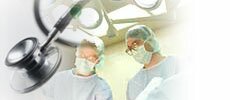|
|
|
 Exploring The Alternatives Exploring The Alternatives
Today, in order to become a doctor, one has to go to a medical school, which is a four-year program costing hundreds of thousands of dollars. According to one survey, for every dollar that the medical student pays, there are four dollars that come from other sources of funding. Most people don't realize that 90% or more of the M.D. faculty members are volunteers.
They aren't paid. I find that incredible to contemplate. The real heart, the essence, of medical school is provided free of charge. It is the institution itself - the rigidity - that is so expensive.
Conservatively speaking, there are thousands of people with chronic illnesses who have educated themselves about their conditions via the internet. They quickly managed to become more familiar with their diseases than the physicians who treat them.
There is a wealth of non-profit web sites dedicated to medical subjects and authored by non-physicians. Though often extremely information rich, they typically post a disclaimer stating that their information should not be considered medical advice, and that the reader should always consult a physician.
|
|
 |
 |
Such a disclaimer is appropriate for legal reasons, but usually ludicrous, because these sites are often generally more substantive and accurate than the information provided by most licensed doctors.
This is not a criticism of physicians, but of the medical system. When doctors are seeing thirty patients a day, they have little remaining time for researching new medical developments.
After having been programmed by years of education to practice with a particular style, their potential for creativity and growth is severely hindered.
|
|
Traditional institutional education is rigid and non-creative, directed toward learning information that is mostly irrelevant and obsolete. Replacing the current structure with a system that focuses on live patients and allows ample time for the student to devise creative solutions via internet information resources, technical support, and a worldwide communication network would greatly improve the quality of healthcare.
The role of the teacher is not to lecture, but to be available when the student is having difficulty or requires advice. Lectures can be conducted via the internet. Today's doctors tend to use ritualistic, formulaic approaches: weigh, measure, take blood pressure, conduct a superficial examination, write a prescription, and then move to the next patient. Good medicine is a creative process; a process which must be developed from the beginning.
Printable Page | Back | Top | Next | Printable Site
|
|
|
